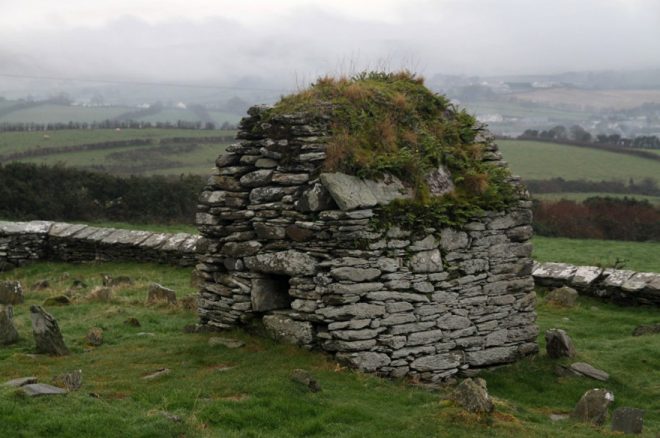
Skull House near Moville.
WITH Halloween just around the corner, there’s no shortage of places in Donegal which have significantly spooky place names.
If you’ve ever wondered how some of the county’s spookier areas got their title, Donegal County Council has now put together an interactive map showing where these places are and how they came to have such unique names.
One of the Donegal’s most beautiful locations is Bloody Foreland, but the name also has slightly sinister connotations. According to experts, it gets its name from the way the sun shines on the rocks, illuminating them in a rich red hue.
Folklore records that a malevolent warlord, Balor of the Evil Eye, was slain by his grandson Lugh Lámh Fhada on the hillside of Cnoc Fola. Rumour has it that the tide of blood which flowed from Balor’s evil eye tainted the hillside, giving it its creepy name.
The Poisoned Glen is another name which is somewhat unusual. In Irish, this glen in Dunlewey is called ‘Gleann Nemhe’, or the Heavenly Glen. The word for poison in Irish is Nimhe – just one letter difference, so it is quite easy to see how it may have been mistranslated when translated to English.
In Fanad, the profile of the Knockalla Mountain range is imagined to resemble the bumpy backbone of the Devil himself and has been given the title ‘The Devil’s Backbone’.
One of Donegal’s most iconic mountains, has a summit of 666m, a number generally associated with the occult, be extra careful when scaling it!
The Murder Hole on the Rosguill Peninsula, according to local legend, got its name as in the 1800s a young woman was pushed to her death from the sheer cliff.
Oileán na Marbh, the Isle of the Dead, off the coast of Gweedore, is where the bodies of 500 stillborn babies were buried in the 18th and 19th centuries as they were not baptised and could not be buried on consecrated ground.
Remembrance services are held for the babies, attended by the Church of Ireland and the Catholic Church alike. There is a memorial stone and cross erected on the site in memory of the babies.
There’s also an area featured on the map called Dead Man’s Hole. This name could relate to a drowning incident in which a body was found washed up in a cave.
Not forgetting Rotten Island – the name ‘rotten’ was given to the island as it was a forlorn place. It is now home to a lighthouse guiding ships into Killybegs harbour.
Some of the county’s other eerie locations include Balor’s Prison – this placename comes from the 40 foot cleft where the sinister Balor of the Evil Eye left his prisoners.
Lough na Meeltoge is thought to be the source of Glenveagh’s notorious midges.
Devil’s Bridge – Polliffren or Hell’s Hole and the Devil’s Bridge refer to the eerie and dark section of the coast.
Gortadragon – The origin of this place name is quite hazy, although we assure people that there are no dragons living there.
Skull House is believed to be an old oratory. It lies within a graveyard in Cooley, overlooking the Foyle and Moville. It is believed that it may have been an ancient tomb for local saints as human remains were discovered in it.
Gallows Lane was so-called due to its proximity to the Old Courthouse in Lifford.
The interactive map can be accessed through Donegal County Council’s website.









